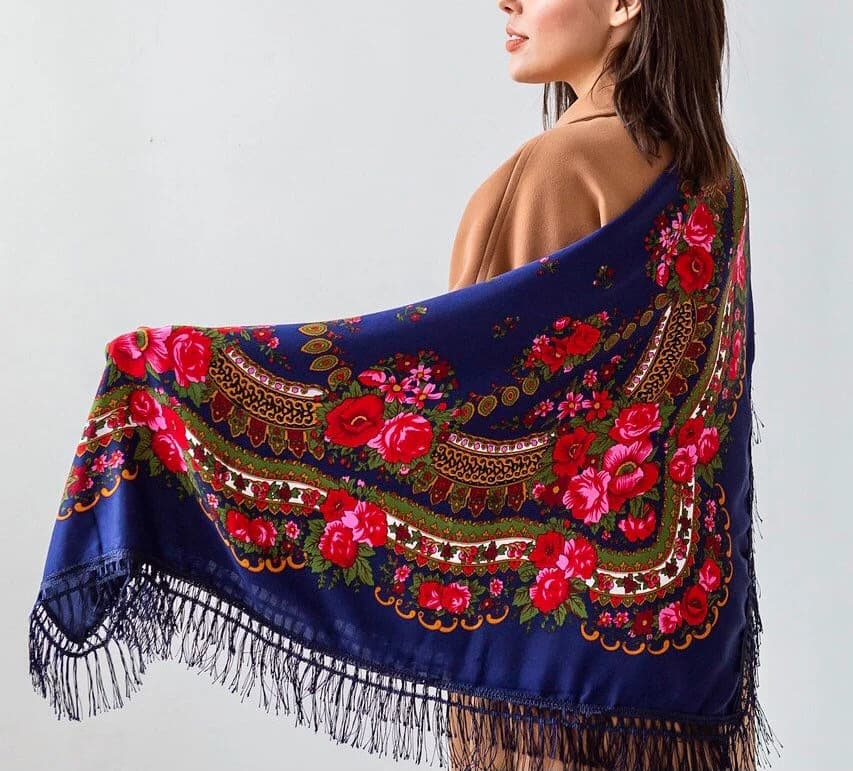We’ll look at great orientalist shawl models that are more beautiful than one another. But first, let’s take a historical and oriental tour of the shawl’s background. After origins of shawl, we’ll take a look at do we need shawl as part of accessory and why orientalist models.
What is a shawl?
The northernmost part of the Indian subcontinent, Kashmir, is where the words “shawl” and “pashmina” originate. According to sources, an Iranian scholar named Sayeed Ali Hamadani brought cashmere crafts to Kashmir in the fourteenth century. He discovered that the Kashmiri Ladakhi goats produced silky wool. He created socks out of some of this goat wool and presented them as a gift to Sultan Qutbuddin, the ruler of Kashmir.

Hamadani then suggested to the monarch that they use this wool to launch a shawl weaving business in Kashmir. That is the history of pashmina shawls. According to the United Nations agency UNESCO, Ali Hamadani was one of the principal historical figures who shaped Kashmir’s culture, both architecturally and through the flourishing of arts and crafts, and thus the economy, in Kashmir. His skills and knowledge brought to Kashmir spawned an entire industry.
Do we need it?
The reason we need a piece of clothing or an accessory, such as a shawl, will become clear only after we learn how to use it. An outfit or accessory is not required – with all due respect to the religious imperatives -. It may be necessary for him to be with us only when we believe it is convenient for us.
So, let’s look at the various applications and see if they’re necessary. There are numerous fashionable ways to wear a shawl. Begin with these simple shawl styling ideas for some inspiration;
- Maintain tradition
- Put it on
- Criss-Cross your way into a top
- Make a poncho
- Create a bolero
We’ll go over all of the specifics of these models in the last title, but first, let’s discuss why applying orientalist models to our clothing is so important.
Why orientalist models?
Orientalism is more valuable and important than you might think, not only as a cultural code, but also in fashion design. Among the most enduringly popular sources of inspiration for Western artists and designers is “The Orient,” which has contributed in a style known as “Orientalism.” The Orient had been a broad geographical designation used in the past to describe the several nations and civilizations of Asia, Africa, and the Middle East.
These cultures represented “romance, exotic beings, foreboding memorable moments and natural landscape, impressive experiences” to the Western mind. Although the nations and cultures covered by this broad term share some similarities, each has its own cultural and artistic cultures. For this reason, orientalist shawl models are one of the most preferred models all over the world.
How can I have an orientalist model shawl?
- Maintain tradition: The most common way to wear a shawl is to drape it over your shoulders and behind your neck. Your shoulders and some of your shoulder blades should be covered by the shawl’s loose ends. This styling option adds warmth to a winter outfit without constricting your arms in the way that a cardigan would. Alternatively, toss one side of the shawl over the opposite shoulder so that it hangs loosely down your back, as is a popular way to wear Pashmina shawls and blanket scarves.
- Put it on: Cinch the shawl around your waist for added protection and security. Drape the shawl over your shoulders and place both sides of the fabric across your chest. Wrap a belt around your waist to secure the shawl fabric.
- Criss-Cross your way into a top: By crossing your shawl or blanket scarf in the front and wrapping it around your waist, you can create a top. Begin by wrapping the shawl around your shoulders. Wrap the fabric from your right shoulder around to the left side of your waist and behind your back. Repeat the process on the opposite side. Tie the fabric’s loose ends behind your back. To ensure maximum coverage, wear a tank top underneath this style.
Orientalist Shawl Models
- Make a poncho: Begin by draping the fabric over your shoulders to create an asymmetrical poncho. Secure the ends of the shawl together down the center of your chest with a few safety pins. To create an asymmetrical look that falls down one shoulder, rotate the pinned shawl to the side so that the long sides hang down your arm. For a cozy, casual look, layer this poncho over a white T-shirt and skinny jeans or leggings.
- Create a bolero: Make a DIY bolero jacket out of any shawl in your closet. Wrap the scarf’s loose ends under your biceps and drape it over your shoulders. Tie the ends of the shawl behind your back, then pull down the rest of the fabric to get the right amount of coverage.
We discussed the Orientalist Shawl Models in today’s article. More topics and articles that may be of interest to you can be found in the Cocador. Stay well and with Cocador.








